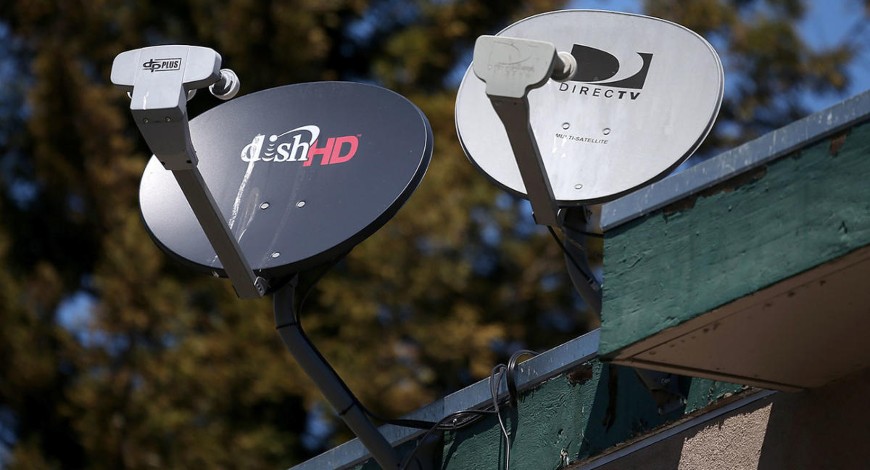International Circuit
Pay TV cord-cutting accelerates as CableSat providers see losses

As Hollywood mostly wraps its quarterly earnings season, Wall Street analysts are zeroing in on the major pay TV providers’ declining subscriber bases and growth outlook.
“The second quarter of 2022 marked the second consecutive quarter with over 1.9 million net pay-TV losses,” stated Bruce Leichtman, who runs Leichtman Research Group, which tracks the sector. “Over the past year, top pay-TV providers had a net loss of about 5,425,000 subscribers, compared to a net loss of about 4,550,000 over the prior year.”
Comcast, Charter, Cox, Altice, DirecTV, Dish, Verizon and Hulu’s live TV tier all lost subscribers this past quarter, Leichtman noted, with Comcast (-500,000) and DirecTV (-400,000) leading the way for losses.
Meanwhile, Wells Fargo analyst Steven Cahall lowered his pay TV subscriber forecasts for 2023 and 2024 and painted a bleak picture of current trends. The total pay TV sub decline of 2,256,000 that he calculated for the industry based on company disclosures “marks the highest sub decline quarter in our tracker, overtaking the first quarter of 2020’s 2,075,000,” he wrote in the report that listed the figures in the tracker going back to 2019. “From a peak of more than 100 million in 2015, pay TV subs are now about 82.5 million, and we estimate penetration to be around 55 percent of TV households, down from a peak of 81 percent.”
Discussing the “worst loss” for a quarter in the three-month period ended in June, Cahall argued that, “cord-cutting definitely stepped up in the second quarter, and we expect it to remain elevated given all the content shifting to streaming and consumers looking to trim their subscriptions due to the macro and/or subscription fatigue.”
The acceleration in cord cutting “was mostly driven by linear” providers’ sub drops, which reached 1.778 million, the expert highlighted. His linear data includes Comcast, Charter, Altice USA, Cable One, DirecTV, Dish, Verizon and “all other.” While that came in below the first quarter of 2020’s 2.036 million decline, back then, virtual multichannel video programming distributors shed only 39,000 subs. That segment, which includes AT&T’s virtual services, Hulu Live, YouTube TV, Dish’s Sling TV, Sony Vue, FuboTV and “Philo/other,” in the latest quarter lost 478,000.
Adding these figures up gets Cahall to a 5.2 percent drop in pay TV subs in the second quarter, compared with 3.7 percent in the first quarter and 4.3 percent in the second quarter of 2021.
For all of 2022, he continues to forecast a 5.8 percent drop. But for 2023, the analyst now projects a 6.7 percent drop, compared with his previous estimate of 5.6 percent, and for 2024, he foresees a 6.9 percent fall instead of a 5.6 percent decline.
Addressing the impact on Hollywood giants, which traditionally get a high percentage of their revenue and earnings from their cable networks units that make revenue from affiliate fees and advertising, Cahall argued: “While the trajectory is broadly reflected in media and broadcast (financial) models as we’ve moved through earnings season, it creates a downside bias to affiliate-related revenues and adds to macro fears surrounding the durability of calendar year 2023 earnings before interest, taxes, depreciation and amortization (EBITDA).”
Cahall pointed out that Fox Corp., Paramount Global and AMC Networks have the highest exposure among entertainment companies. “In terms of revenue exposure to the domestic bundle, it’s 40-50 percent of revenue for Nexstar, Fox, Tegna, Sinclair Broadcast and Gray Television and more like 30 percent for E.W. Scripps and AMC Networks, and then around 20% for Paramount and Warner Bros. Discovery (the materiality is lower for Walt Disney and Comcast due to other businesses),” he wrote. “We think EBITDA sensitivity is highest for Fox, Paramount and AMC Networks with around 1 percent per annum worsening to annual cord cutting negatively impacting calendar year 2024 EBITDA by 6 percent, 5 percent and 3.5 percent, respectively. These media names have little/no offsets to cord cutting.” The Hollywood Reporter








